Asceticism –The Fasting or Emaciated Buddha**
I
know that self-discipline and abstinence – asceticism – are parts of religious practice within many religious and spiritual traditions including Buddhism. That knowledge derives from many sources. They agree on a sense of deprivation that a practitioner somehow should observe. The degree of adherence seems to be the difference and point of much discussion.
In the pursuit of enlightenment, Prince Siddharta – Buddha – left his life of privilege and became a beggar. He sat under the bodhi tree for seven weeks. Wasting away and nearly dying from hunger, he was offered a bowl of rice and water. Buddha realized in this time that fasting and asceticism can not bring him enlightenment and therefore he abandoned the harsh practices for good.
He came to view asceticism as an extreme path. It led to the same dissatisfying end as the pursuit of wealth and riches.
Buddha understood that mental cultivation and insight, not bodily deprivation, would lead to enlightenment. In the end, he adapted a Middle Way and taught his followers to do the same.
Kochi Prefecture
| 🌸 Asceticism (Shugyo dojo) | Temples 24–39 (16 temples) |
Farmhouse farewell
It is time to leave this place, this sanctuary and resting spot.
Click on video:
My mindset was delightfully altered by the experience.
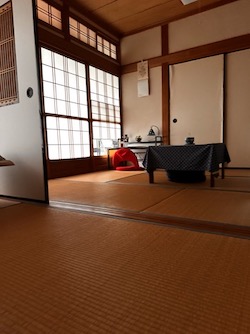
Getting Back On The Trail
So far, I visited 34 temples on the pilgrimage trail on Shikoku island. When I began at the first temple, Ryozenji. I saw a very long, endless path in front of me. It was all in my mind.
It did not take long to remember I am not participating in a race to the last temple. Instead I accept that I am on a walking meditation heading slowly, surely toward enlightenment.
Buddhist writings emphasize that there is no suffering. The 2nd stage or dojo here in Kochi as asceticism dojo is proof that all suffering has not been eliminated! So far it has lived up to its name. I experienced a few mishaps and worrying moments, but I am still walking and living to tell my tale.
Continue the walk with me in the asceticism dojo…
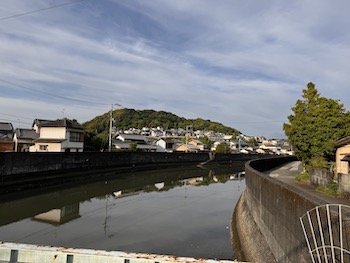
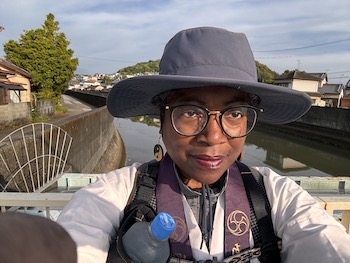
… and ride with me.
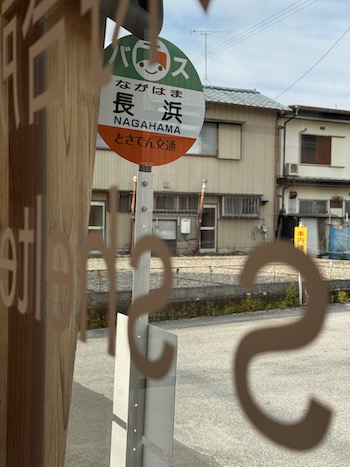
At times, conditions on the trail have been quite less than ideal for pilgrimage sessions. I encountered many kinds of weather: extreme heat and rain, a typhoon, earthquake and resulting landslides, and official detours. Factor that with great distances and helpful advice from my hosts, and local townspeople. Repeat ohenros reveal their experiences and the best way to navigate through them and quickly return to the path. My own observations exert the best influence. In the end, I make and carry the decisions.
Practicing the Middle Way
Each is made with my goal in mind, taking into consideration common sense, my health and well-being, safety, and a belief in the Middle Way: to get to the 88th temple on Shikoku and on to Mount Koya.
Arriving at each temple is a delight to my soul. Getting there – to me – should not be filled with fear, trepidation, or extreme deprivation regarding the environment through which I travel. Getting myself out of a spot employs my intuition, experience, and desire to honor myself as ohenro on and off the trail.
I will certainly walk the path. And ride a bus or train when and where it makes sense to reach any destination safely and intact. I will ride to a good landing spot and resume walking on the trail. Whatever decision I make at any time during my pilgrimage on Shikoku 88 is the best one for the conditions I encounter. I am ohenro, still. And I trust myself.
Let’s walk.
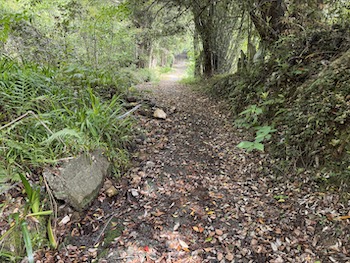
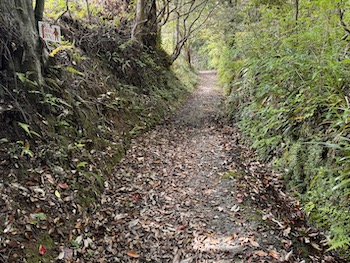
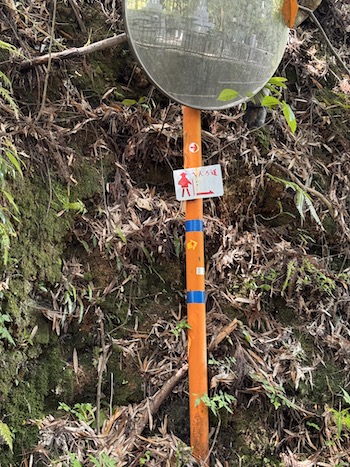
I have not seen anyone today walking the trail. The woods are full of familiar sounds of insects, birds, and hidden animals.
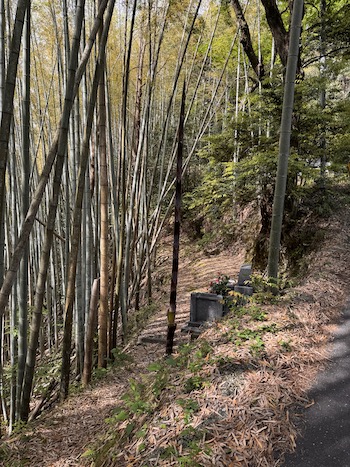
Along the path are memorial markers and cemeteries. Stone steps visible off the trail lead to graves in the woods. Graves on the path are cleaned and maintained. They help alleviate the loneliness I feel.
Temple 35 Kiyotaki-ji
Temple of the Clear Waterfall
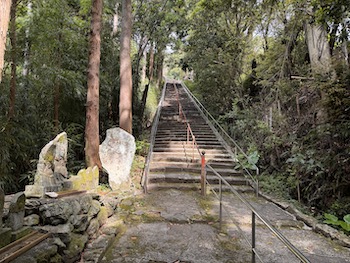
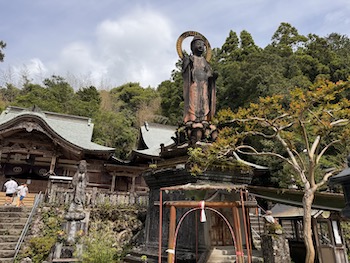
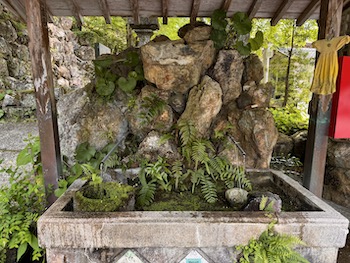
The ubiquitous steps leading to the temple gate.
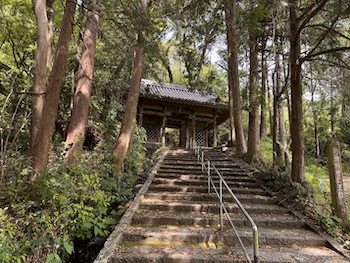
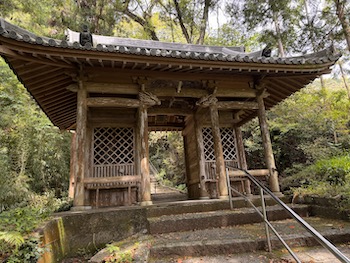
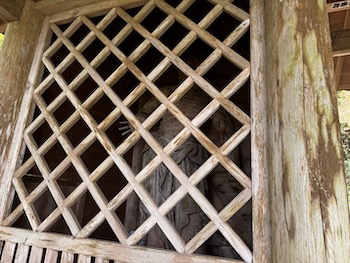
Click on video:
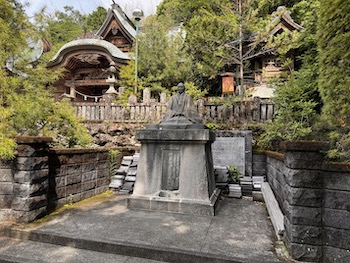
The gate and hondo (main temple building) are decorated with dragons.
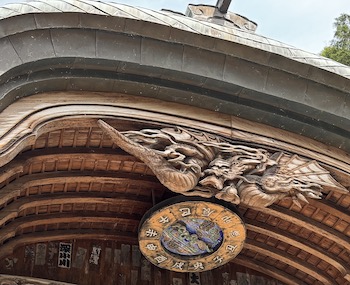
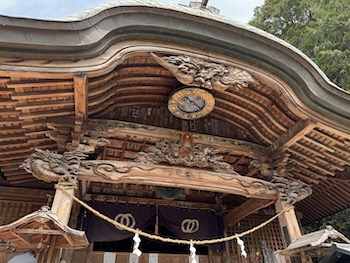
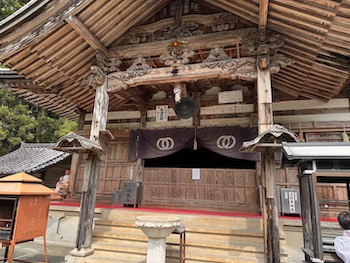
A Shinto shrine is next door to the Buddhist temple showing the coexistence of the two religions in Japan. By the way, The torii gates are a sign, most of the time, of a shrine.
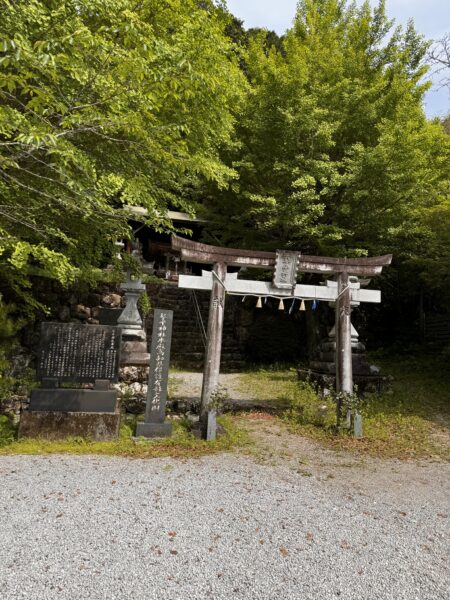
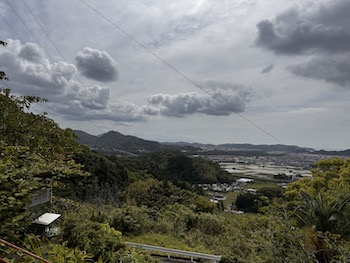
Help for the Holidays
After my visit to temple 35, I had to find my accommodation for the night.
It is still Golden week and still I was unable to find a place to stay for the second half. In a moment of desperation, I asked my farmhouse host for help. I needed a place to stay for the latter half of the holiday.
She called around and found something for me. The hosts were friends of hers. We arranged the details and I was set for the remaining days, except for one. That day, Monday, is a travel day for many travelers. It can be just as difficult to get an accommodation, but I will handle that when the time comes. As she pointed out, I was a lucky girl! I was, indeed!
One of the places was a minshuku high in the mountains next to temple 35. The other was near temple 36. I felt better having the reservations made. Now I had to get to this first accommodation.
Temple 35 is on a winding path high in the mountains. My accommodation is on a similar winding path. Well, if you guessed that there is no straight line from one to the other, you are right. I could have missed it, I don’t know. The place was most difficult to find. It was a longer search than I expected. I retraced my steps when I got confused. Even my G-map was befuddled. That happens sometimes. It did not help that I did not see a single soul for almost an hour.
Most of the houses looked empty. The haunting feeling intensified the urgency I felt to find the minshuku.
In the ‘hood
Finally, I saw a man walking on the street through a residential area on the mountainside. We stopped and talked for a moment. I just asked to be pointed in the right direction to the minshuku. He said that he would walk there with me. Again, I was a lucky girl!
As we walked, we talked about the neighborhood. He told me that he grew up here, but lives and works in northern Japan. Jobs and the lifestyle were his primary reasons for leaving. He said his elderly parents still live in the family home. They have various physical ailments and dementia. His brother who still lives in the area is responsible for much of their care. My guide returns from Tokyo as often as he can to care for his parents and give his brother a break.
He said that many of his schoolmates left the area for reasons similar to his. His old school is closed now. The remaining schoolchildren in the area commute to schools in other communities.
Refuge in the Sky
During our conversation, we continued to climb up into the mountains but still did not reach the minshuku. He wanted to stay with me and see me safely there. I believe he offered it as osettai. It is the first time I felt guilty about that. He was sweating as much as I was! And I was wearing a well-weighted backpack. We continued climbing.
At one point, he told me to rest – my feet were hurting badly – and he continued up the winding mountain path. I waited a couple of minutes, then I started walking in the same direction. I thought I could meet him part of the way to reduce the distance he would have walked to retrieve me. It seemed that 10 more minutes passed before I caught up with him coming back down to tell me he found the place high in the mountains. We continued walking together for another 10 minutes in the hot sun.
We saw the place around a bend. I did not think anything could possibly be higher but there it was.
Finally, we made it to the front veranda but the owner was not there. After a few minutes, she drove up to the house.
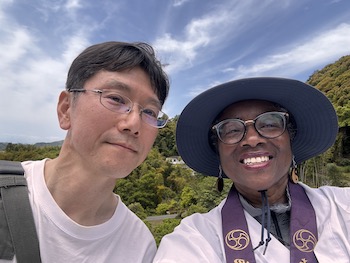
My friend remarked to the owner that he was familiar with the area but did not know this place. Then it was time for him to leave. We embraced and took this photo. He was a caring man. I know I was meant to meet him. Arigato gozaimasu!
The Minshuku
It is a traditional wood Japanese farmhouse. It is an old structure. In these mountains fires are always a concern. My host and her husband were not old. They seemed to be a hip couple. In spite of appearances, she wanted to know if I was a smoker. I am not. The irony is that her husband was and did! I just did not want to go up in flames after that long climb up this mountain. Their house, their rules. And it is still standing.
I made sure to note the doorways and exits to the outside. I eventually relaxed. We can all relax.
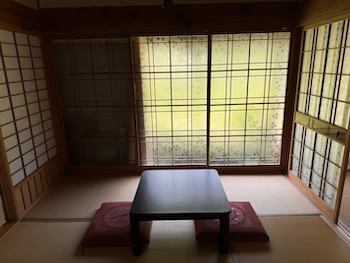
I knew that a store or restaurant are nowhere close to this spot. For that, I always carry a little food to avoid the example of extreme asceticism modeled by emaciated Buddha. My energetic host insisted that I join two other ohenros who were staying for the night. We sat in the kitchen, talked, and ate. It was a nice way to end this long day on the trail.
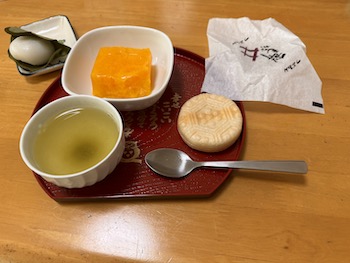
I cleaned myself up, checked my knee, and mentally prepared my plans for the next day.
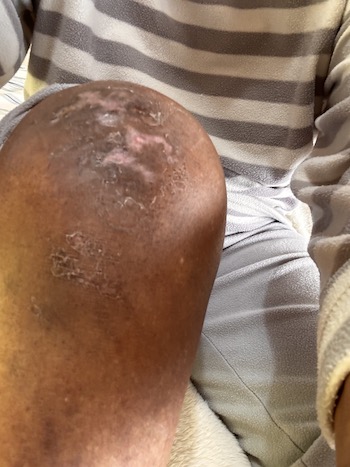
better. I feel like a kid showing off my scars!
Asceticism
Each of us has our own idea of modeling asceticism. I believe that this climb was my greatest test in that. As I knew I would, I survived and stayed on the path toward my goal of enlightenment. Right now it is easy to say that I had no doubts that I would make it, but in the moment I can admit that perhaps I had.
That’s what the world is, after all: an endless battle of contrasting memories.
– Haruki Murakami
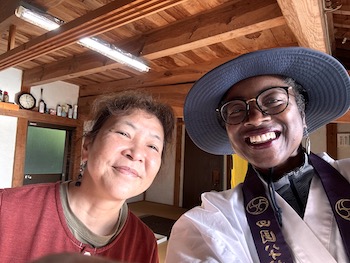
See you next time.
Baadaye and Mata Ne (またね)
Shirley J 🌸
During the spring of 2024, I began a pilgrimage in Japan where I am walking 1200 kilometers or 720 miles on the Shikoku trail from Temple 1 Ryōzenji to Temple 88 Ōkuboji and beyond. Read my original announcement here.
I am excited, and I am here, still walking. And just know this, I will return to tell the tale!
** Emaciated Siddhartha Fasting Gautama Buddha,
Wat Umong, Chiang Mai, Thailand;
author: Akuppa John Wigham: CC 2.0 Generic license.
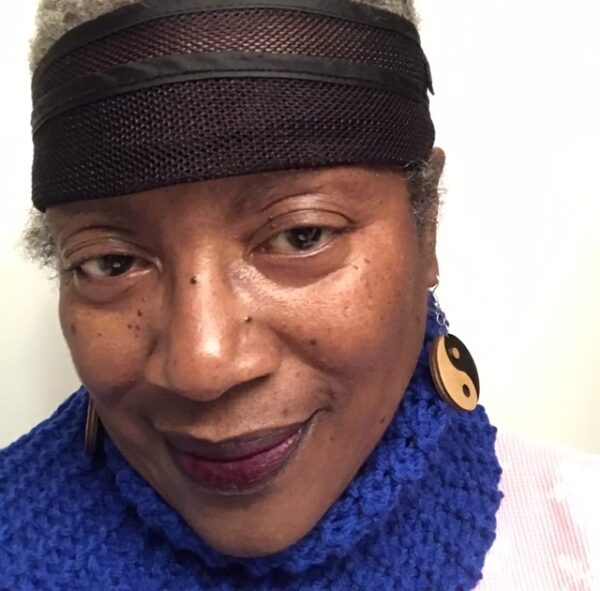

2 thoughts on “🌸 Noire Henro-san: Golden Week Pt 6, The Middle Way”
Good job! Both finding accommodations, and then actually finding your accommodations.
Thanks. I really went through it! So lucky for the help from both sides. 🌸
Comments are closed.